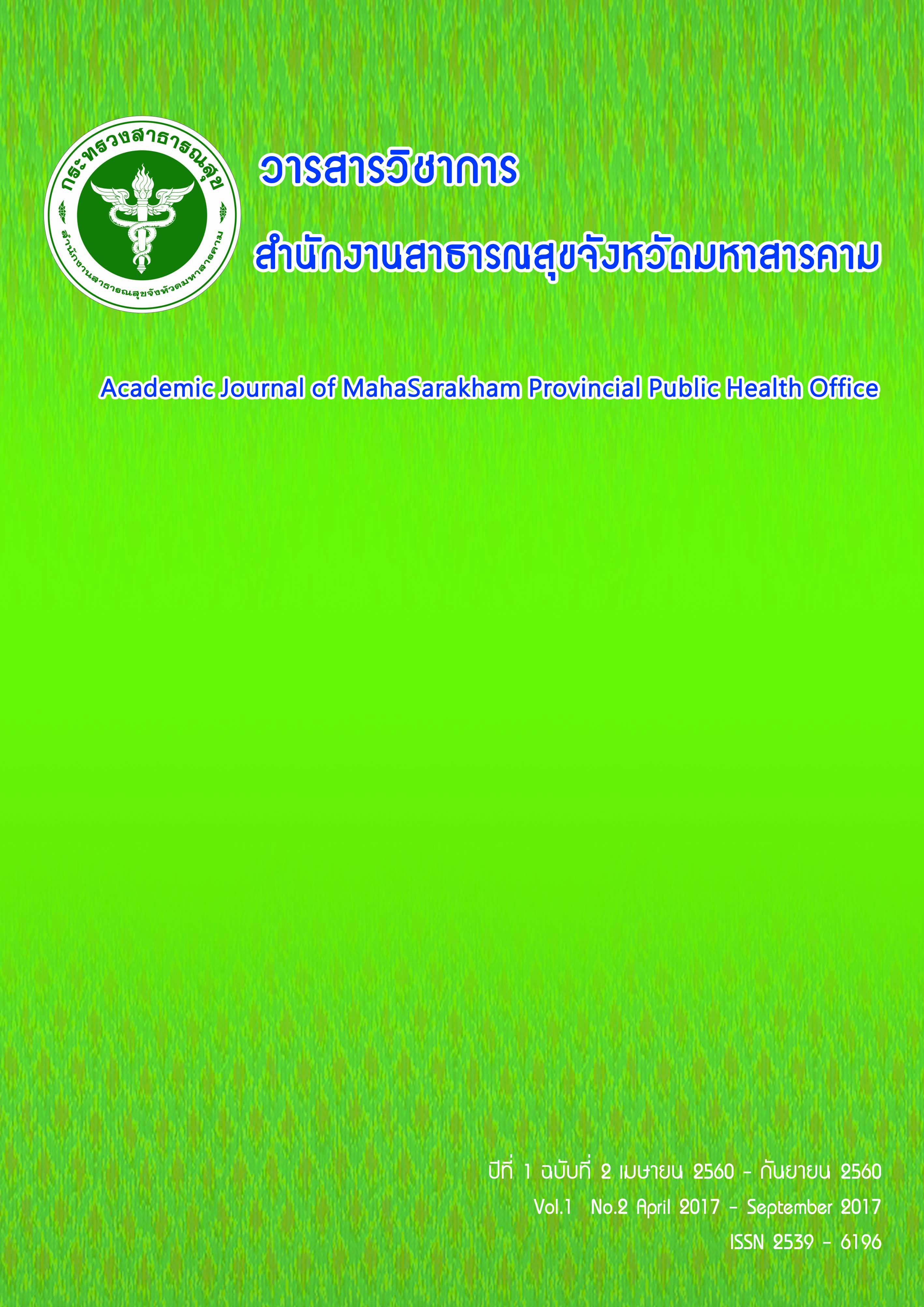ความชุกของโรคหลอดเลือดสมองเฉียบพลันและคุณภาพของการดูแลรักษาตามแนวทาง Stroke Fast Track ในโรงพยาบาลบรบือ จังหวัดมหาสารคาม Prevalence of acute stroke and the quality of care according to the Stroke Fast Track in Borabue hospital, Mahasarakham province.
Abstract
ABSTRACT
This analytical research was retrospective cohort study. The purpose was to study the situation of patients with acute cerebral infarction treated in the Borabue hospital, on the issue of patient prevalence, patients transfer information,quality of care and patient outcomes and to study the relationship between various factors on the duration of the treated timely of Stroke Fast Track. The population and sample group were composed of 110 acute stroke patients treated at Borabue hospital between October 1, 2015 to September 30, 2016. The instrument was self-developed and divided in 3 part; general personal information, patients transfer information and patient outcomes. Data were collected by the patient's medical records from of Borabue hospital and the referral form of Mahasarakham Hospital and were analyzed by descriptive statistics include percentage, mean and standard deviation and analysis statistics by using Chi-square test. The research findings showed that 51.8 percent of patients were men and aged 30-88 years, mean age 64.36 years, 53.6 percent mostly in the range from 65 years. 62.7 percent of patients had at least one underlying disease that increase risk of a stroke. 51.8 percent of them were non-smokers, and 52.7 percent did not drink alcohol. The study of transfer information found that most of patients did not use the EMS service, only 29.1 percent of patients were delivered by EMS. Results showed that most patients arrival timely of Stroke Fast Track (180 minutes) 58.2 percent. The results of quality of care showed that the Door to physician over the 10 minutes were 52.7 percent and the Doorto refer over the 30 minutes were 70 percent. The final diagnosis showed that 70 percent of patients were ischemic stroke and the second most were hemorrhagic stroke 17.3 percent and transient ischemic attack 12.7 percent. Patients with cerebral infarction treated with fibrinolysis two cases, representing 2.59 percent. The correlation analysis found that gender, age and underlying disease did not affect the golden period to the emergency room, but the factor that affect the golden period was patients who had been delivered by EMS. And the correlation between the door to physician time and door to refer time were statistically significant. This comparative study between two groups that separated by obtaining knowledge of awareness program before in the risk group to analyze the relationship of awareness program of non-communicable disease clinic to the onset to hospital time of patients, results showed that the two groups were not statistical correlation. The results of this study suggested that people who have risk of acute stroke should be encouraged to educate, the more both in and outside the hospital and patients should be encouraged to make more use EMS service to increase the rate of the door to hospital in time of the golden period. Along with improving the quality of treatment in the emergency room.Keywords: Acute ischemic stroke, Onset to hospital, Stroke Fast TrackDownloads
Published
2019-08-05
Issue
Section
Original Articles (นิพนธ์ต้นฉบับ)


